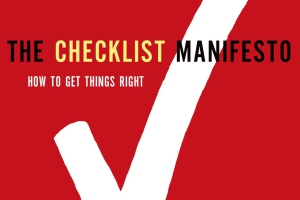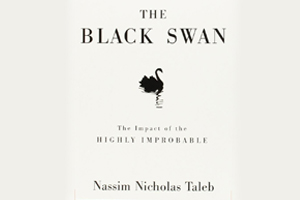Author: Gillian Tett
As someone who is interested in the world of finance and investing, how much do you truly know about the underbelly of this glittering global ecosystem? Chances are, you have read about or even experienced the dotcom crash of 2000, and the terrible facets of the Lehman crisis which unfolded in 2007. For those of you who are keen on deeper insights into one of the major financial catastrophes to befall the world’s largest financial ecosystem, the United States of America, Gillian Tett’s Fool's Gold: How Unrestrained Greed Corrupted a Dream, Shattered Global Markets and Unleashed a Catastrophe, is an exceptionally intriguing read. With this treatise, you can explore the depths of the financial crisis while also delving into the thrilling narrative of bankers who rode the boom and suffered the crash, as narrated by the first UK journalist to predict it.
Picture the mid-1990s at a sprawling hotel on a secluded Florida beach, where JP Morgan bankers convened for a now-legendary off-site meeting. Amidst the revelry of a wild weekend filled with drinking, nightclubbing, and even fist-fights, a more profound purpose emerged—to evaluate the potential of building a business around the then-novel concepts of credit derivatives. At the epicenter of this financial revolution was a tight-knit team, characterised by an unwavering sense of loyalty to each other and to the bank. For years, nothing could sever their bond. However, as the team eventually disbanded, the innovations they initiated took on a life of their own, triggering unforeseen consequences in the mortgage market that ultimately led to a catastrophic outcome.
World-renowned author and journalist Gillian Tett, now the chair of the editorial board and editor-at-large of the Financial Times, US, is well-known for her brilliant exposes in the financial world and Fool’s Gold is an excellent instance of her incisive writing which brings to life events that shaped the ecosystem as we know it today. She has written extensively about a variety of financial instruments, including credit default swaps, conduits, collateralised debt obligations, special purpose entities, and structuralised investment vehicles which played a major role in precipitating the financial crisis of 2007. Her gripping narrative, Fool’s Gold, serves as both a real-life thriller and an investigative expose, offering an insider's perspective into the enigmatic realm of complex finance—a perfect storm that set the stage for the credit crunch.
Key Takeaways
- Pioneering credit derivatives:P. Morgan took the lead in the development of credit derivatives, employing a cautious approach in their utilisation
- Risk disparity among banks: While Morgan exercised caution, other banks embraced risk-taking strategies that were deemed imprudent and intolerable by J.P. Morgan's experts
- Impact on Morgan's performance: J.P. Morgan experienced a decline in revenue and stock price compared to its peers due to its conservative stance as CEO Jamie Dimon resisted joining the risk-chasing trend
- Complex financial web: The growth of the credit derivatives market, coupled with mortgage securitisation, created intricate and poorly understood interconnections among financial institutions
- Regulatory challenges: Pioneers of derivatives sought to exempt their innovations from regulation, eventually succeeding but with dire consequences
- Proactive risk mitigation: As the US housing market started to decline in 2006, Dimon prioritised minimising exposure to subprime mortgages, a move not widely replicated by other bank leaders
- Ignorance of real risks: Both bankers and regulators remained unaware of the true risks within regulated institutions, leading to a failure to react to escalating risks in mortgages and derivatives
- Financial turmoil unfolds: Chase Manhattan acquired J.P. Morgan, the US government intervened to rescue Bear Stearns and AIG, while allowing Lehman Brothers to fail, triggering a scramble among bankers and governments to safeguard the global financial system
Tett’s Fool’s Gold ranks among the most efficient and detailed explanations of the great financial crisis of 2008, and delineates how the entire financial ecosystem faced unprecedented risk, owing to the greed and missteps of the ones in power. From tracing the inception of credit derivatives in the early 1990s to bringing forth an insightful take into the crisis which totaled Lehman Brothers, Tett’s tale is one of caution amid unbridled ambition – an excellent read for buffs of financial history.
The beginning of the end
In 1991, E. Gerald Corrigan, the president of the New York Federal Reserve, raised concerns about derivatives. Morgan's CEO, Dennis Weatherstone, engaged Peter Hancock, head of the Derivatives team at J.P. Morgan, to clarify the intricacies of the business. By January 1992, Corrigan expressed apprehensions about the rapid growth of derivative trading in a speech to the New York State Bankers Association. Recognising a pivotal moment, the influential "Group of 30" (G30) decided to investigate, with Weatherstone chairing the study and attempting to understand its potential impact on future derivatives regulation. Mark Brickell, a J.P. Morgan swaps banker and vocal opponent of regulation, vigorously defended the derivatives business against federal rulemaking. Nicknamed a "Rottweiler" in the fight against regulation, Brickell asserted that the industry itself was best equipped to manage risk, even as J.P. Morgan's "Value at Risk" model, a quantitative tool assessing portfolio loss probability, supported this stance. Brickell's relentless lobbying against regulation stirred controversy in Washington, yet regulators withdrew from intervening in derivatives. The G30 report outlined precise measures for banks to manage derivative risk but concluded that government intervention was unnecessary, thereby cementing the beginning of the collapse which would take place about a decade and a half down the line.
The BISTRO model comes into play
In the aftermath of the 1994 Boca Raton event, Blythe Masters, known for putting together Morgan’s first credit derivative, orchestrated a credit swap with the European Bank for Reconstruction and Development, allowing J.P. Morgan to transfer the credit risk of an Exxon loan without selling the loan itself. Masters, with colleagues from the esteemed lender, advocated for lower capital reserves for banks using credit derivatives to offload credit risk and the Fed approved this approach in 1996. J.P. Morgan introduced the "broad index secured trust offering" (BISTRO), employing securitisation to bundle loans and sell them to special-purpose vehicles (SPVs), insuring against default risks. Despite lucrative bonuses for the derivatives team, regulators raised concerns about potential widespread defaults and insufficient SPV cushions. Insurer AIG then entered the scene, offering banks coverage against "super-senior risk." In 1999, J.P. Morgan assisted Bayerische Landesbank with a USD 14 million US mortgage loan risk using the BISTRO method, prompting questions about how other banks handled similar risks.
Innovation turns dangerous
During the 1990s, J.P. Morgan, known for its proud tradition and conservative culture, faced challenges as banks expanded into nontraditional businesses after the repeal of the Glass-Steagall Act in 1999. The merger frenzy that followed left J.P. Morgan appearing smaller compared to its peers. Derivatives chief Peter Hancock's resignation in 2000 marked a shift, and J.P. Morgan was acquired by Chase Manhattan, causing dismay among its bankers. Bill Demchak, now co-head of credit in the merged institution, observed Chase's revenue-generation through risky loans to the Internet sector and scandalous borrowers. The Enron scandal in 2001 implicated Chase, which was also involved with scandal-hit companies like Global Crossing and WorldCom. As other institutions emulated the BISTRO model, they expanded the risk envelope, engaging in deals involving subprime mortgages and rating agencies, in part due to competition, approved these deals. Losses on credit led to a decline in Chase's stock price, ultimately resulting in its merger with Bank One in 2004, with Jamie Dimon becoming CEO. Dimon, known for turning around Bank One and his attention to detail, took over with a focus on managing costs and risks, thus leading the bank into the next phase of the dangerous game.
Rising risk in the field
Driven by the desire to match industry trends in mortgage securitisation, new CEO Jamie Dimon established a team at Chase. However, concerns arose as anomalies appeared in the housing market, with borrowers defaulting on high-risk mortgages despite a robust economy and low mortgage rates. While other banks continued to take mortgage risks, J.P. Morgan sought ways to reduce its exposure. Even industry experts like Winters struggled to comprehend how banks managed mortgage-related risks profitably. When the housing market stalled, Chase's annual revenue lagged behind competitors due to rivals profiting from mortgage securitization. Dimon, heeding his team's risk analysis, insisted on divesting from mortgages, especially subprimes. However, other banks and financial regulators persisted in assuming mortgage risks, leading to a financial landscape that few understood. Despite warnings from the Bank for International Settlements in 2003 and concerns from Germany's G8 representatives in 2007 about hidden risks, little action was taken.
The inevitable collapse
In June 2007, a crisis surfaced as Bear Stearns faced problems with a hedge fund. J.P. Morgan, having extended loans to the fund, demanded repayment, while Merrill Lynch's threat to sell collateral worsened Bear Stearns's situation. Another crisis ensued in Germany in July when Deutsche Industriebank, facing downgrades on mortgage-backed securities, struggled to find buyers for its commercial paper. J.P. Morgan couldn't offer assistance, leading the German government to intervene and support the bank. Throughout 2007, global fears mounted, triggering a liquidity crisis and making bankers and investors wary of risks. Central banks, including the European Central Bank and the Bank of England, took unprecedented actions to stabilise markets. By August, President George W. Bush publicly reassured the U.S. on the serious financial situation. The existence of a vast shadow banking system, harbouring immense hidden risks, was unveiled. In 2008, regulators and bankers scrambled to prevent a system collapse, oscillating between rescuing institutions like Bear Stearns and letting others, such as Lehman, fail. Jamie Dimon foresaw a challenging period, stating it would be a financial crisis unparalleled in bankers’ lifetimes, thus indicating the end of a timeline which witnessed innovation go rogue and endanger entire ecosystems.
Tett’s tale is a gripping and brilliant narrative – one which enables the reader to viscerally experience the events that triggered the global financial crisis. It is also a cautionary story, which advises investors to only bite off as much as they can chew.
The biggest takeaway from this book is the narrative around caution, risk mitigation, and regulation. At a broader level, regulation plays an important role in mitigating systemic risk. On that front, mutual funds, governed by the regulations laid out by the Securities Exchange Board of India (SEBI) are well positioned to work within risk mitigation frameworks that are aligned with the risk constraints of retail investors. Further, in the case of mutual funds, the risk mitigation is not just restricted to regulation. The risk profile of the scheme is clearly showcased by mutual funds, thereby allowing investors to invest in schemes that can meet their return requirements while also staying within the boundaries set up by their risk profile. Another important thing to highlight is the Systematic Investment Plan (SIP) approach to invest in mutual funds. SIPs entail investing a fixed amount of money into mutual fund schemes of your choice at intervals that suit you best. This systematic approach to investing helps to reduce the impact of behavioural actions and better navigate equity market volatility. Thus, given the importance of risk mitigation in investments, mutual funds can be an interesting choice for investors.
An investor education initiative by Edelweiss Mutual Fund.
All Mutual Fund Investors have to go through a onetime KYC process. Investor should deal only with Registered Mutual Fund (RMF). For more info on KYC, RMF and procedure to lodge/redress any complaints – please visit on https://www.edelweissmf.com/kyc-norms
MUTUAL FUND INVESTMENTS ARE SUBJECT TO MARKET RISKS, READ ALL SCHEME RELATED DOCUMENTS CAREFULLY.
Trending Books
MUTUAL FUND INVESTMENTS ARE SUBJECT TO MARKET RISKS, READ ALL SCHEME RELATED DOCUMENTS CAREFULLY.













